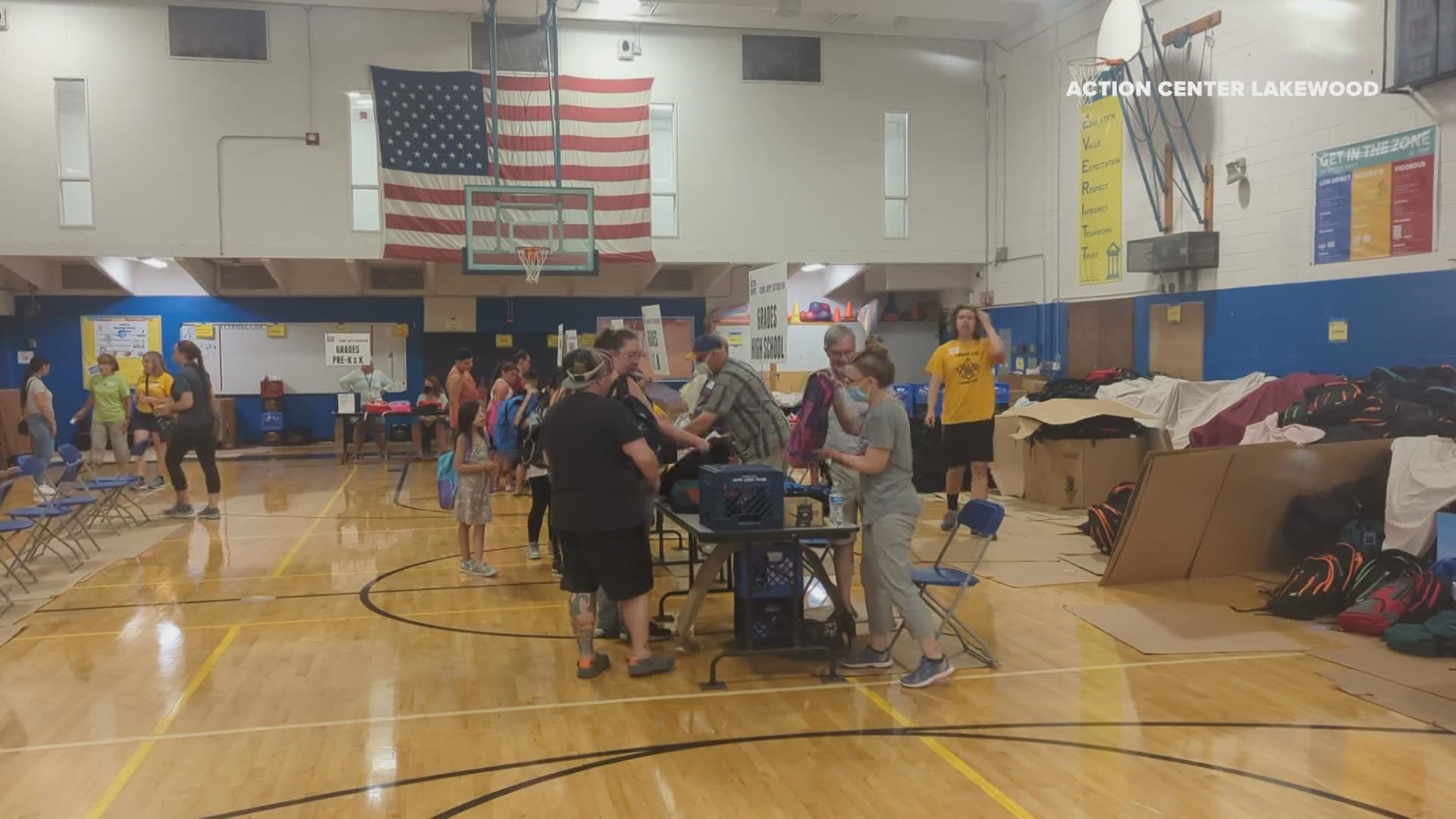AURORA, Colo. — Families will spend more money to send their kids back to school this year.
The National Retail Federation says families with elementary and high school kids plan to spend an average of $864 per household on things like clothes and school supplies. That's $167 more than pre-pandemic averages.
It's tough for families and tough for the teachers and organizations that help stock classrooms.
“I put together an Amazon wish list of my basic necessities,” said Addie Howell, who just moved to Colorado this year and is working for Aurora Public Schools.
“And I posted that [wish list] on all social media platforms I have, and I was really fortunate to get the entire list filled by my family and friends and through reaching out to the families at my school as well," she said. "I feel very grateful for that.”
Howell guesses her wish list, which included things like writing and coloring utensils, cleaning supplies and snacks, was valued around $500. Without those donations, she would be covering those costs, on a teacher’s salary.
“The past two years have been difficult enough. Wanting to get school supplies on top of that is really difficult for some of the families in this community as well. So if we can help with that in any way shape or form, again, very grateful for that," she said.
“We did a survey a few years back asking educators how much they spend out of pocket, and it was over $700 on average,” Colorado Education Association President Amie Baca-Oehlert said.
“This [survey] was a couple years ago. Certainly that cost has gone up," she said. "That’s something we’ve seen just add to inequities in schools and classrooms. You have those teachers whose lists get fulfilled and those who don’t. That just creates more disparities for educators and their students.”
Baca-Oehlert said many teachers are also parents, and buying school supplies for their own households too.
“I’m a parent. I have three kids. It's been hard for me as a parent to get away spending less than $500 trying to fulfill those class lists for my own children,” she said. “On top of that, you still have the classroom teacher that is supplementing things, providing things for the classroom.”
Rising costs have made things challenging for organizations trying to help families.
“It's certainly impacting our donation supply chain,” said Tawney Eisenbraun with The Action Center in Lakewood.
The center just kicked off its annual school supply distribution Wednesday. They offer backpacks full of supplies for about 5,000 low-income Jeffco families.
The Action Center is also seeing more families come to them looking for help with groceries.
“That $10 used to buy you 10 cans of soup, or 10 packs of markers. It might only buy you six packs of markers now,” Eisenbraun said.
“When you have to pick between making sure your kids are clothed or have school supplies, and making sure electricity stays on, or you have groceries, that's a hard choice. We don't want any family to have to be put into that position," Eisenbraun said.
The Action Center still has appointments available for the school supply distribution.
SUGGESTED VIDEOS: Education stories from 9NEWS

